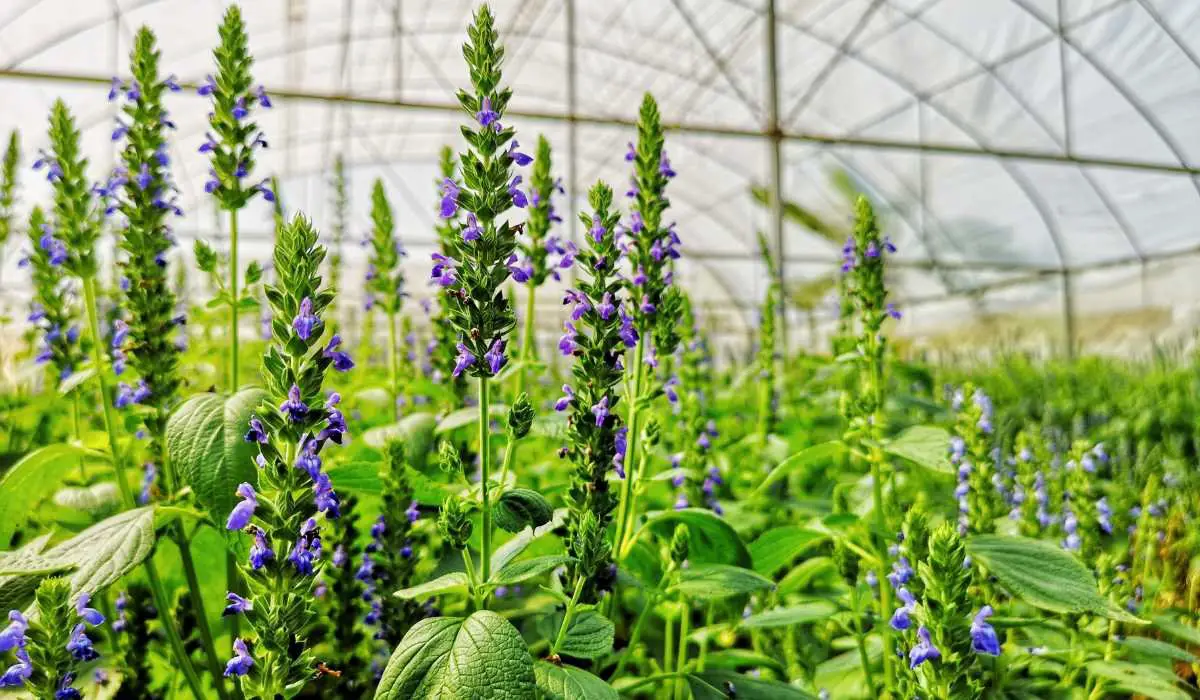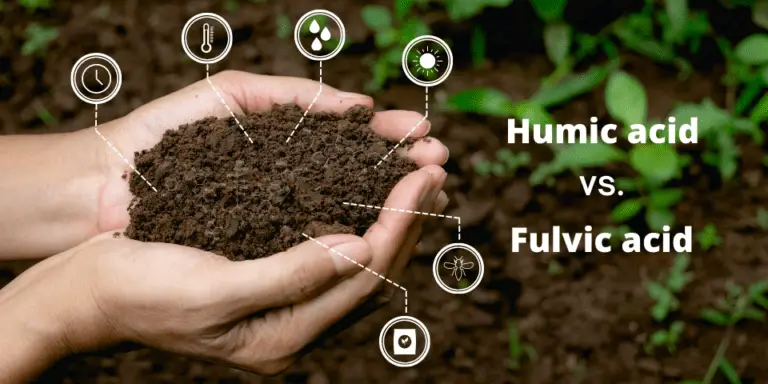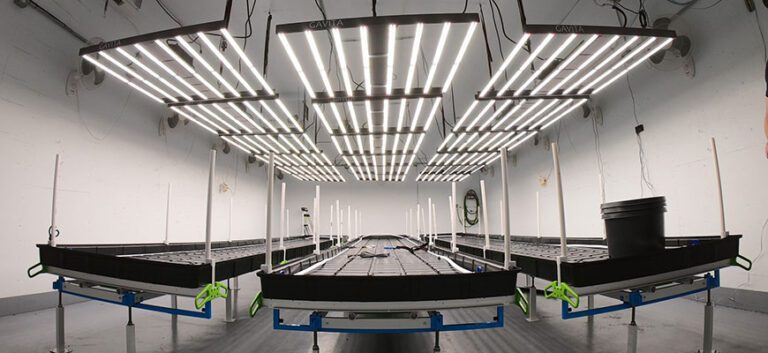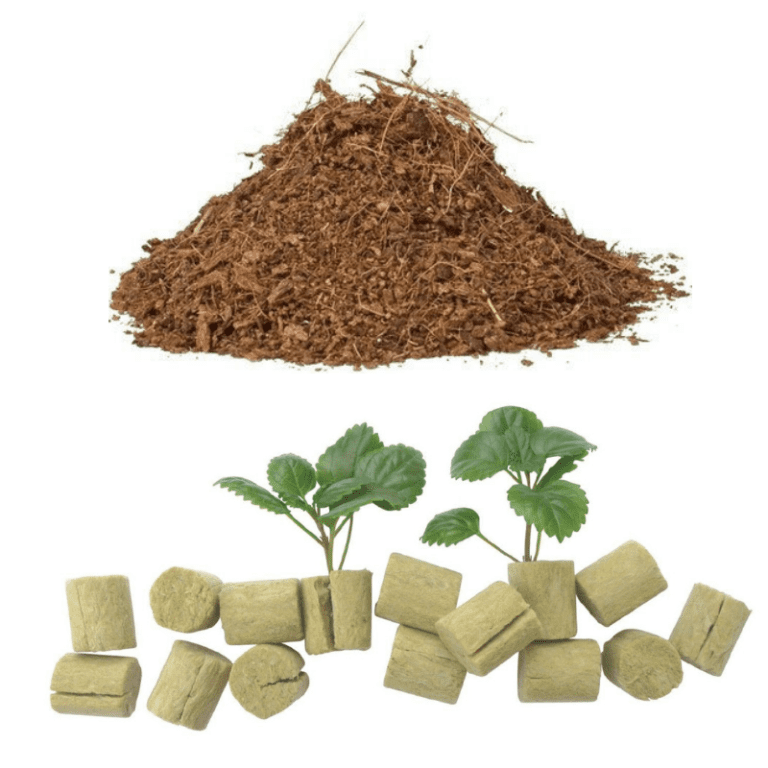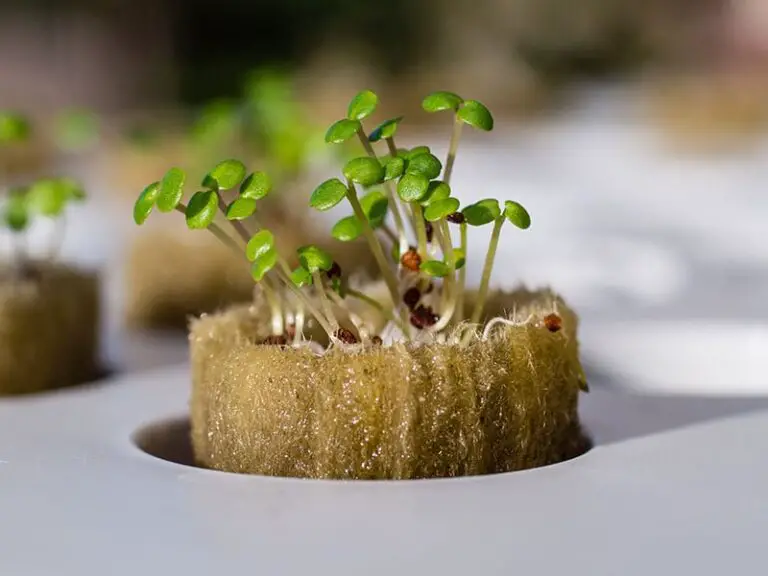Chia Plant: Sage’s Seedier Cousin
Did you know that Chia plants are actually a type of sage? That’s right, these tiny plants are the seedier cousin of the sage plant we all know and love. Chia plants are easy to grow and can be used in a variety of dishes, from salads to smoothies. As an expert in gardening, I can tell you that Chia plants are a great addition to any garden. They’re easy to care for, and their tiny seeds make them a great addition to any dish.
So if you’re looking for a new plant to add to your garden, Chia plants are a great choice. Get ready to grow these tiny plants and add some flavor to your meals!
Table of Contents
The History of Chia Seeds
Chia seeds are indeed fascinating little powerhouses with a rich history and a wide range of health benefits.

- Ancient Roots:
- Aztecs and Mayans: These civilizations recognized chia seeds as valuable food and medicine.
- Staple Food: Chia seeds were a dietary staple, providing essential nutrients.
- Currency and Rituals: They were used as currency and offered in religious ceremonies.
- Etymology:
- The word “chia” likely originates from the Nahuatl term “chian,” meaning oily.
- This refers to the seeds’ high omega-3 fatty acid content.
- Nutrient-Rich: Chia seeds are packed with essential nutrients, including:
- Fiber: They’re an excellent source of dietary fiber, promoting digestive health.
- Protein: Chia seeds contain complete protein, making them suitable for vegetarians and vegans.
- Omega-3 Fatty Acids: These tiny seeds are rich in alpha-linolenic acid (ALA), a type of omega-3.
- Antioxidants: Chia seeds provide antioxidants that help protect cells from damage.
- Minerals: They’re a good source of calcium, phosphorus, and magnesium.
- Hydration and Gel Formation:
- When mixed with liquid, chia seeds absorb it and form a gel-like consistency. This property makes them useful in recipes like chia pudding or as an egg substitute in baking.
- Versatility in Cooking:
- Chia seeds can be sprinkled on yogurt, oatmeal, or salads.
- They can be added to smoothies, providing a boost of nutrition.
- Try making chia seed puddings by mixing them with your favorite milk or plant-based alternatives.
- Health Benefits:
- Heart Health: Omega-3s in chia seeds may help reduce inflammation and improve heart health.
- Blood Sugar Control: Their high fiber content can help stabilize blood sugar levels.
- Weight Management: The gel-like texture keeps you full, aiding in weight management.
- Bone Health: Calcium and phosphorus contribute to strong bones.
- How to Use Chia Seeds:
- Mix 1-2 tablespoons of chia seeds with water or your preferred liquid. Let them sit for a few minutes to form a gel.
- Add the gel to smoothies, baked goods, or use it as a thickener in sauces.
Remember to start with small quantities and gradually incorporate chia seeds into your diet. Enjoy experimenting with these ancient superseeds! 🌱🌟
The Nutritional Value of Chia Seeds
Chia seeds are renowned for their exceptional nutritional profile, making them a popular choice for health-conscious individuals.
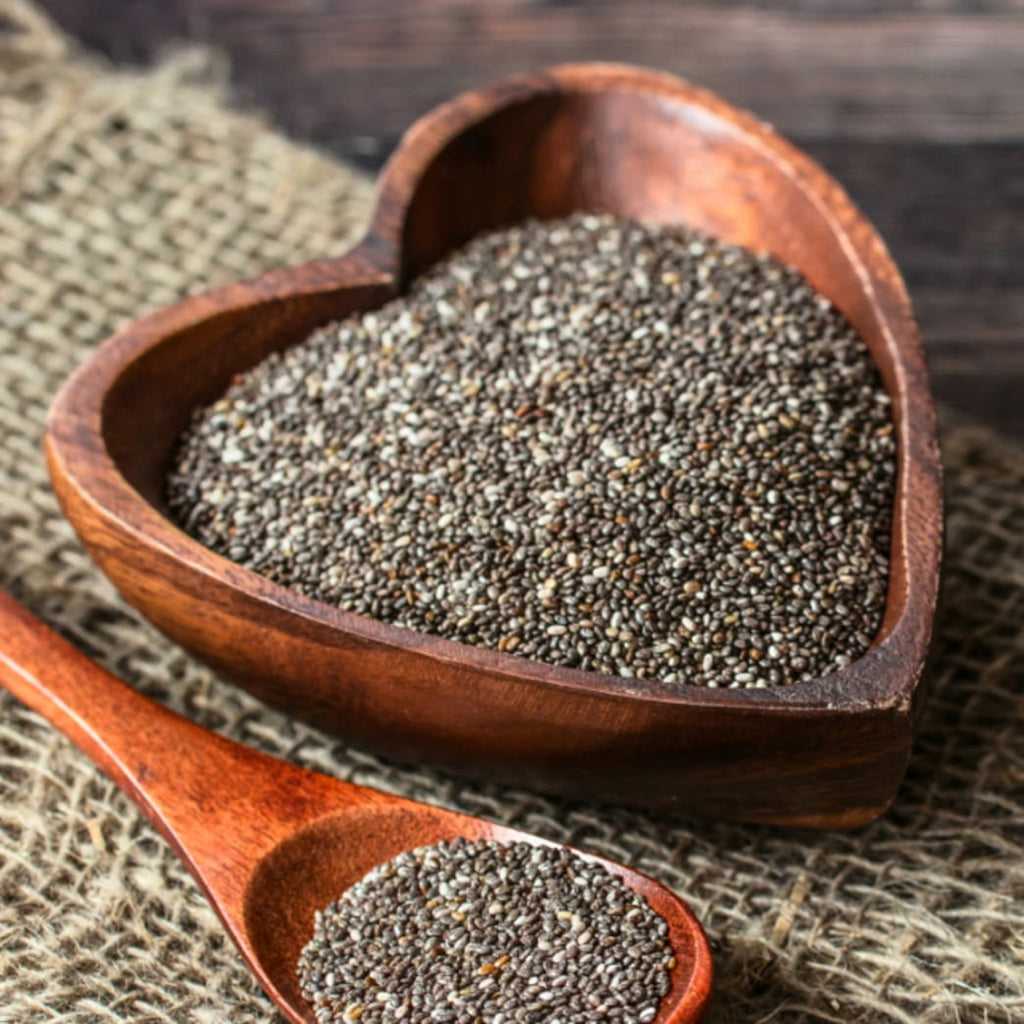
- Nutrient-packed seeds: Chia seeds are packed with essential nutrients, including fiber, protein, healthy fats, minerals, antioxidants, and omega-3 fatty acids.
- Impressive nutritional profile: Just a single ounce of chia seeds provides 11 grams of fiber, 4 grams of protein, and 9 grams of healthy fats, along with essential minerals such as calcium, phosphorus, and magnesium.
- Low in calories and carbohydrates: Despite their nutrient density, chia seeds are low in calories and carbohydrates, making them suitable for various dietary preferences and restrictions.
- Versatile addition to any diet: Chia seeds are versatile and can be easily incorporated into any diet, whether it’s vegan, vegetarian, paleo, or keto.
- Ability to absorb water: Chia seeds have the unique ability to absorb water, forming a gel-like consistency. This property can help promote a feeling of fullness, aid in digestion, and regulate blood sugar levels.
- Widespread health benefits: With their wide range of health benefits, including improved digestion, weight management, and heart health, chia seeds have gained popularity in the world of nutrition and wellness.
The following table explains about the nutritional value of chia seeds:
| Nutrient | Value per 1 oz (28g) Serving | Treatment/Effect |
|---|---|---|
| Calories | 138 | – Provides sustained energy. |
| Protein | 4g | – Supports muscle growth. |
| Fat | 9g | – Rich in omega-3 fatty acids. |
| Carbohydrates | 12g | – Slow-release energy source. |
| Fiber | 10g | – Promotes digestive health. |
| Calcium | 177mg | – Supports bone health. |
| Phosphorus | 265mg | – Essential for cell function. |
| Manganese | 0.6mg | – Important for metabolism. |
| Magnesium | 95mg | – Supports muscle function. |
| Iron | 1.6mg | – Helps prevent anemia. |
How to Grow Chia Plants
Growing chia plants can be a delightful and rewarding experience. Here’s a simplified guide to help you get started:
- Choose the Right Spot:
- Sunlight: Select a sunny spot in your garden or on your balcony. Chia plants love sunlight, so ensure they receive at least 6-8 hours of direct sun each day.
- Well-Draining Soil: Chia plants thrive in well-draining soil. If your soil is heavy or clay-based, consider adding some sand or organic matter to improve drainage.
- Planting Chia Seeds:
- Timing: Wait until after the last frost in your area before planting chia seeds. Spring is usually the best time.
- Depth: Plant the seeds about 1/4 inch deep in the soil.
- Spacing: Leave 8-10 inches between each seed to allow for proper growth.
- Watering:
- Initial Watering: After planting, water the seeds thoroughly to help them germinate.
- Consistent Moisture: Keep the soil consistently moist but not waterlogged. Chia plants don’t like to sit in water.
- Drought-Tolerant: Once established, chia plants are quite drought-tolerant.
- Temperature and Air Circulation:
- Warmth: Chia plants prefer warm temperatures. Aim for a range of 60°F to 79°F.
- Air Flow: Ensure good air circulation around the plants to prevent fungal diseases.
- Maintenance:
- Pruning: Trim any dead or yellowing leaves to encourage healthy growth.
- Harvesting: Chia seeds are ready for harvest when the flower heads dry out. Simply cut the stalks and hang them upside down to collect the seeds.
Remember, chia plants are low-maintenance once established. Enjoy watching them grow and reap the benefits of nutritious chia seeds! 🌱🌼
Different Varieties of Chia Plants
Chia plants belong to the Salvia genus, known for their tiny, nutrient-dense seeds that have gained popularity for their health benefits. There are different varieties of chia plants.Here’s a table summarizing the main types of chia:
| Variety | Characteristics | Advantages | Disadvantages |
|---|---|---|---|
| Black Chia | – Produces small, dark seeds rich in antioxidants, fiber, protein, and omega-3 fatty acids. | – High yield potential. – Nutrient-dense seeds. | – Strong flavor and firmer texture. |
| Tzotzol | – Native to Guatemala. – Small, dark seeds with a slightly nutty flavor. | – High yield potential (up to 2,000 kg/ha). | – None reported. |
| Maya | – Grown in Mexico and Central America. – Larger seeds with higher oil content. | – Darker seeds. – Smoother texture. | – Lower yield potential than Tzotzol. |
| Negro | – Developed in Argentina. – Large, uniform seeds with a mild flavor. – Rich in polyphenols. | – High yield potential. | – None reported. |
| White Chia | – Milder flavor and softer texture. – Rich in antioxidants, fiber, protein, and omega-3 fatty acids. | – Creamy-white seeds. – High in calcium and phosphorus. | – Lower oil content than black chia. |
| Blanco | – Native to Argentina. – Large, neutral-flavored seeds. – High in calcium and phosphorus. | – Moderate yield potential. | – None reported. |
| Iztac | – Grown in Mexico and Central America. – Small, ivory-colored seeds with a delicate, nutty flavor. | – Rich in fiber and protein. | – Low yield potential. |
| Lefroy | – Developed in Australia. – Large, round seeds with a slightly sweet flavor. – Rich in magnesium. | – High yield potential. | – None reported. |
| Salvia columbariae (Desert Chia) | – Native to the Southwest. – Low-growing plant with minty smell. | – Well-adapted to arid conditions. | – Smaller seeds compared to other varieties. |
Feel free to choose the chia variety that best suits your preferences and growing environment! 🌱🌼
The Uses of Chia Seeds in Cooking
Chia seeds are incredibly versatile and can enhance both the taste and nutrition of various dishes.
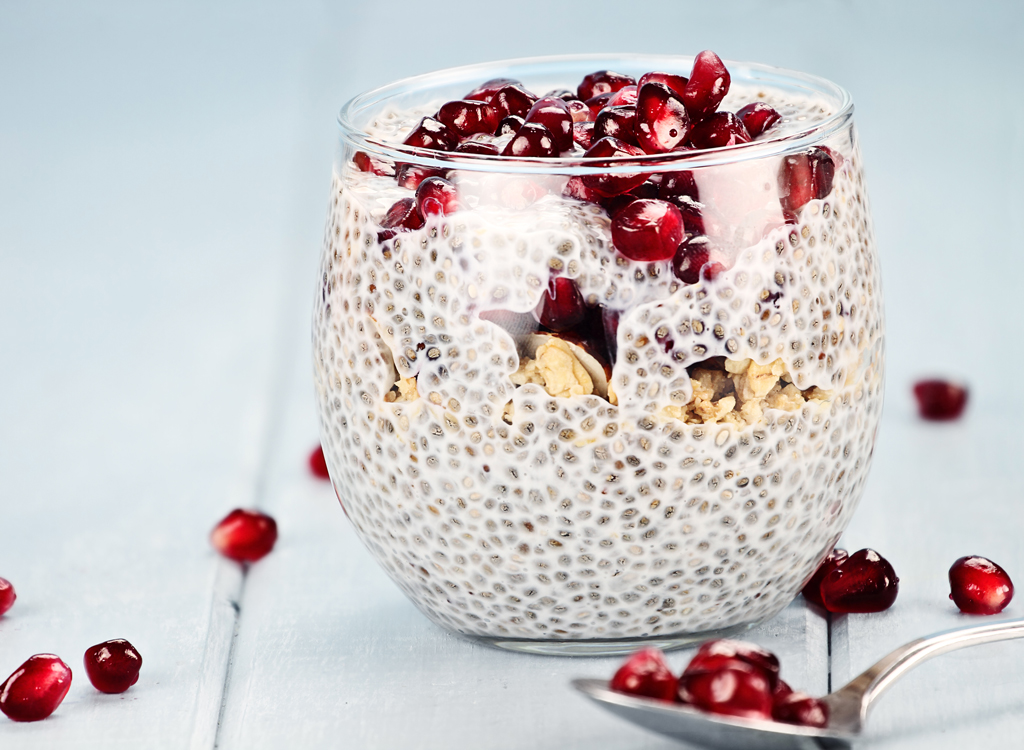
Binding Agent: Replace eggs in baking by mixing 1 tablespoon of chia seeds with 3 tablespoons of water. Let it sit for a few minutes until it forms a gel-like consistency.
Thickening Agent: Add chia seeds to soups, stews, or sauces to thicken them naturally.
Chia Pudding: Mix chia seeds with almond milk or coconut milk (about 1:4 ratio) and sweeten with honey or maple syrup. Let it sit in the fridge overnight to create a delicious pudding.
Top Yogurt or Oatmeal: Sprinkle chia seeds on top of your morning yogurt or oatmeal for added crunch and nutrition.
Chia Parfait: Layer chia pudding with fresh fruits and granola for a healthy parfait.
Chia Energy Bites: Combine chia seeds with nut butter, oats, and honey. Roll into bite-sized balls for a quick snack.
Chia Fresca: Mix chia seeds with water, lemon juice, and a touch of sweetener for a refreshing drink.
Smoothies: Blend chia seeds into your favorite smoothie for an extra boost of fiber and omega-3s.
Remember, chia seeds absorb liquid, so adjust the amount of liquid based on your desired consistency. Enjoy experimenting with chia seeds in your favorite recipes! 🌱🥣
Having recently acquired the “Chia Seed Remedies” book, I must say, it has been a delightful addition to my collection. What truly sets this book apart is its quality of information and presentation. From the moment I delved into its pages, I found myself captivated by the depth of knowledge it offers on chia seeds and their myriad health benefits. The clarity of language and well-organized content make it incredibly easy to navigate through the wealth of information provided.
Moreover, the inclusion of tips, recipes, and real-life stories further enriches the reading experience, making it both informative and engaging. Overall, I am thoroughly impressed with the quality of this book, and I highly recommend it to anyone seeking to explore the wonders of chia seeds and their potential to enhance both physical and mental well-being.
- Comprehensive Information: The book provides detailed information about chia seeds, including their benefits, nutritional value, and various ways to incorporate them into one’s diet.
- Health Benefits: It highlights the numerous health benefits of chia seeds, such as weight loss support, blood sugar regulation, anti-inflammatory properties, and potential anti-cancer effects.
- Versatility: Chia seeds can be used in various recipes and as substitutes for other ingredients like butter or oil in baking, making them a versatile addition to any diet.
- Easy to Understand: The language used in the book is accessible and easy to understand, making it suitable for readers of all levels of familiarity with nutrition and health.
- Positive Customer Reviews: The book has garnered positive reviews from readers who found it informative and helpful in improving their health and incorporating chia seeds into their diets.
- Limited Recipes: Some readers may find the number of recipes in the book to be limited, especially if they were expecting a larger collection of chia seed recipes.
- Recipe Organization: A few readers have expressed a desire for better organization of the recipes, suggesting that having them all in one section would improve usability.
- Personal Preferences: While the book provides a wide range of information about chia seeds, not all readers may find the remedies applicable to their personal health goals or dietary preferences.
- Mixed Reviews: While the majority of reviews are positive, there are some mixed reviews from readers who did not find the book as useful or relevant to their needs.
Chia Seeds as a Superfood
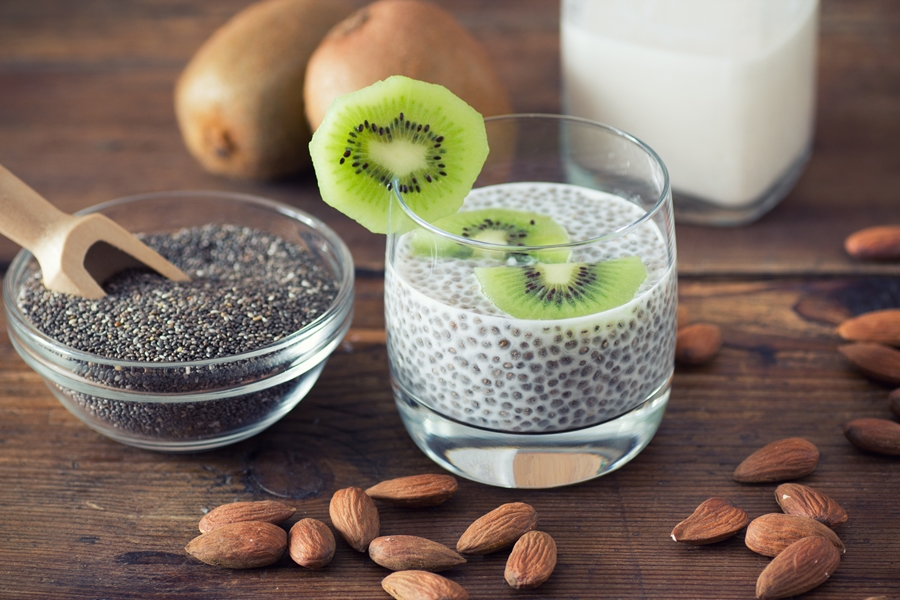
- Nutritional Powerhouse:
- Omega-3 Fatty Acids: Chia seeds are rich in alpha-linolenic acid (ALA), a type of omega-3 fatty acid that supports heart health and brain function.
- Fiber: Just a small serving of chia seeds provides a significant amount of dietary fiber, aiding digestion and promoting a feeling of fullness.
- Protein: Chia seeds contain complete protein, including essential amino acids.
- Antioxidants: Chia seeds are loaded with antioxidants that help protect cells from damage.
- Health Benefits:
- Heart Health: Omega-3s in chia seeds may reduce the risk of heart disease by lowering cholesterol levels and blood pressure.
- Digestive Health: The soluble fiber in chia seeds absorbs water, forming a gel-like substance that supports regular bowel movements.
- Weight Management: The combination of fiber and protein helps control appetite and prevent overeating.
- Blood Sugar Regulation: Chia seeds may help stabilize blood sugar levels.
- Easy Ways to Use Chia Seeds:
- Chia Pudding: Mix chia seeds with your favorite milk (dairy or plant-based) and sweetener. Let it sit overnight for a delicious pudding.
- Smoothies: Add a spoonful of chia seeds to your morning smoothie for an extra boost of nutrients.
- Baking: Use chia gel (chia seeds soaked in water) as an egg substitute in baking recipes.
- Salads and Yogurt: Sprinkle chia seeds on salads or mix them into yogurt.
Remember to stay hydrated when consuming chia seeds, as they absorb liquid and expand in your stomach. Enjoy these little powerhouses in your meals and reap the health benefits! 🌱🌟
Benefits of Consuming Chia Seeds
Chia seeds are a nutrient-dense powerhouse that can offer a wide range of health benefits.
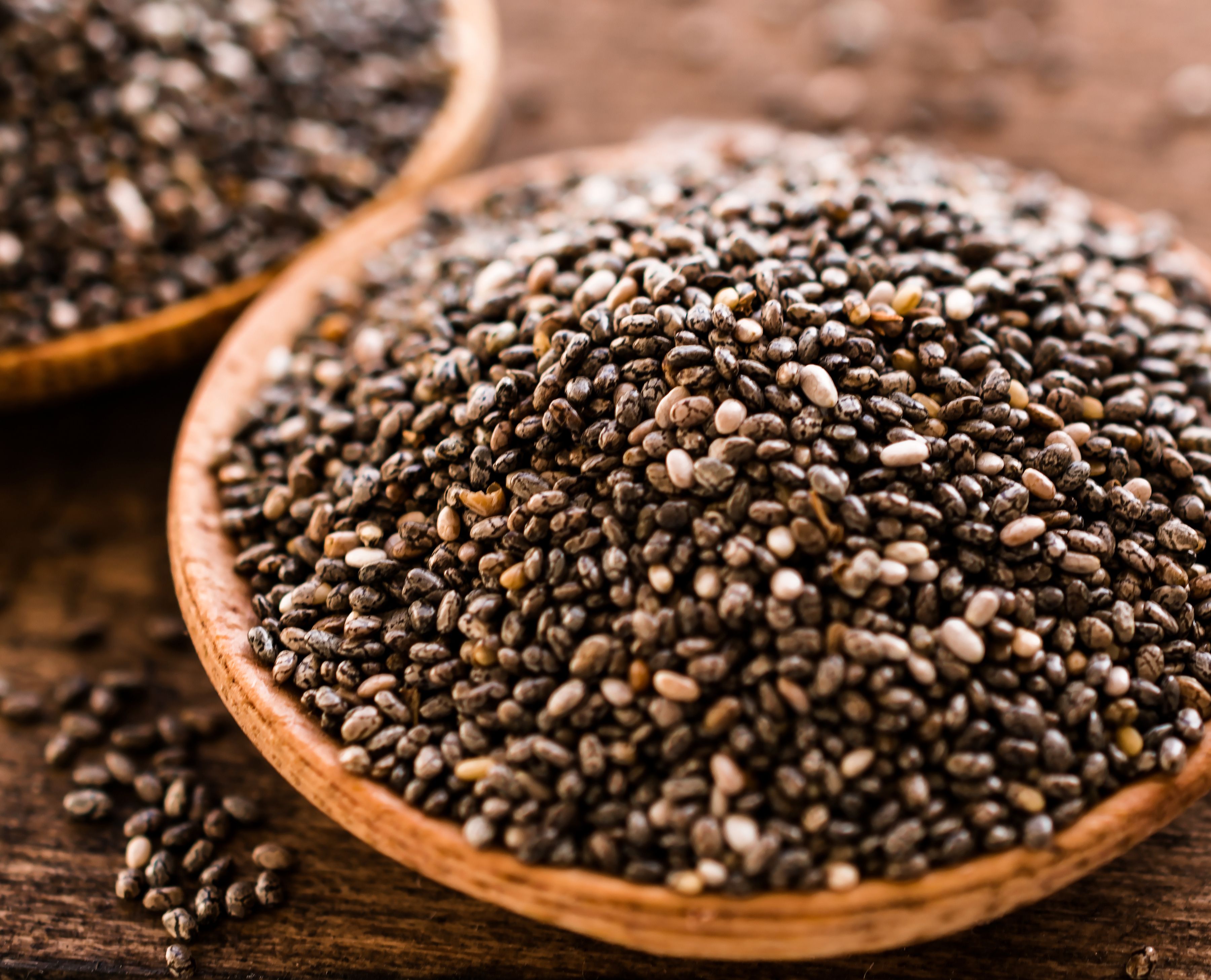
- Nutrient-packed seeds: Chia seeds are rich in omega-3 fatty acids, fiber, protein, antioxidants, vitamins, and minerals, making them a valuable addition to your diet.
- High fiber content: The high fiber content in chia seeds can help improve digestion, promote feelings of satiety, and support weight management by aiding in proper digestion and regulating bowel movements.
- Omega-3 fatty acids: Chia seeds contain omega-3 fatty acids, which contribute to heart health, reduce inflammation in the body, and support overall well-being.
- Stabilize blood sugar levels: Chia seeds have been shown to help stabilize blood sugar levels, making them beneficial for individuals with diabetes or those seeking balanced energy throughout the day.
- Versatile in recipes: Chia seeds are versatile and can be easily incorporated into various recipes. They can be sprinkled on top of yogurt, mixed into smoothies, or used as a thickening agent in puddings and baked goods, enhancing the nutritional profile of meals.
Here’s a quantitative table summarizing the nutritional benefits of chia seeds per 1 ounce (28 grams or 2 tablespoons):
| Benefit | Amount per 1 oz (28g) |
|---|---|
| Calories | 138 |
| Protein | 4.7 g |
| Fat | 8.7 g |
| Fiber | 9.8 g |
| Calcium | 14% of the Daily Value |
| Iron | 12% of the Daily Value |
| Magnesium | 23% of the Daily Value |
| Phosphorus | 20% of the Daily Value |
| Zinc | 12% of the Daily Value |
| Vitamins B1 and B3 | 15% and 16% of the Daily Value, respectively |
Chia seeds truly are a nutritional powerhouse! 🌱🌟
Chia Seeds vs. Sage: A Nutritional Comparison
Chia seeds and sage are both versatile herbs that are used in culinary dishes for flavor and added nutrition.
- Chia Seeds:
- Nutrient-Dense: Chia seeds are a true superfood, packed with essential nutrients.
- Omega-3 Fatty Acids: Rich in omega-3s, supporting heart and brain health.
- Fiber: High fiber content aids digestion and promotes fullness.
- Protein: Contains complete protein, suitable for vegetarians and vegans.
- Vitamins and Minerals: Provides various vitamins (e.g., B vitamins) and minerals (e.g., calcium, phosphorus, magnesium).
- Sage:
- Aromatic Herb: Sage is primarily used for flavor enhancement and aromatic properties.
- Vitamin K: Contains vitamin K, important for blood clotting and bone health.
- Limited Nutrient Density: Falls short compared to chia seeds in overall nutrition.
- Chia Seeds’ Unique Property:
- Gel Formation: Chia seeds absorb liquid and form a gel, useful as a thickener or binding agent in recipes.
In summary, while sage adds flavor, chia seeds offer a powerhouse of nutrients! 🌿🌟
Here is a nutritional comparison table between chia seeds and sage:
| Nutrient | Chia Seeds (per 1 oz / 28g) | Sage (per 1 oz / 28g) |
|---|---|---|
| Calories | 138 | 12 |
| Protein | 4.7 g | 0.6 g |
| Fat | 8.7 g | 0.3 g |
| Fiber | 9.8 g | 2.6 g |
| Calcium | 14% of the Daily Value | 10% of the Daily Value |
| Iron | 12% of the Daily Value | 16% of the Daily Value |
| Magnesium | 23% of the Daily Value | 4% of the Daily Value |
| Zinc | 12% of the Daily Value | 12% of the Daily Value |
Chia seeds are lower in calories, protein, and fat compared to sage, but they are higher in fiber and provide essential nutrients like calcium, iron, magnesium, phosphorus, zinc, and vitamins B1 and B3. On the other hand, sage is richer in protein and provides significantly higher amounts of calcium and iron per serving compared to chia seeds.
Chia Seeds in Traditional Medicine
Traditional medicine systems have long utilized chia seeds for their potential health benefits.
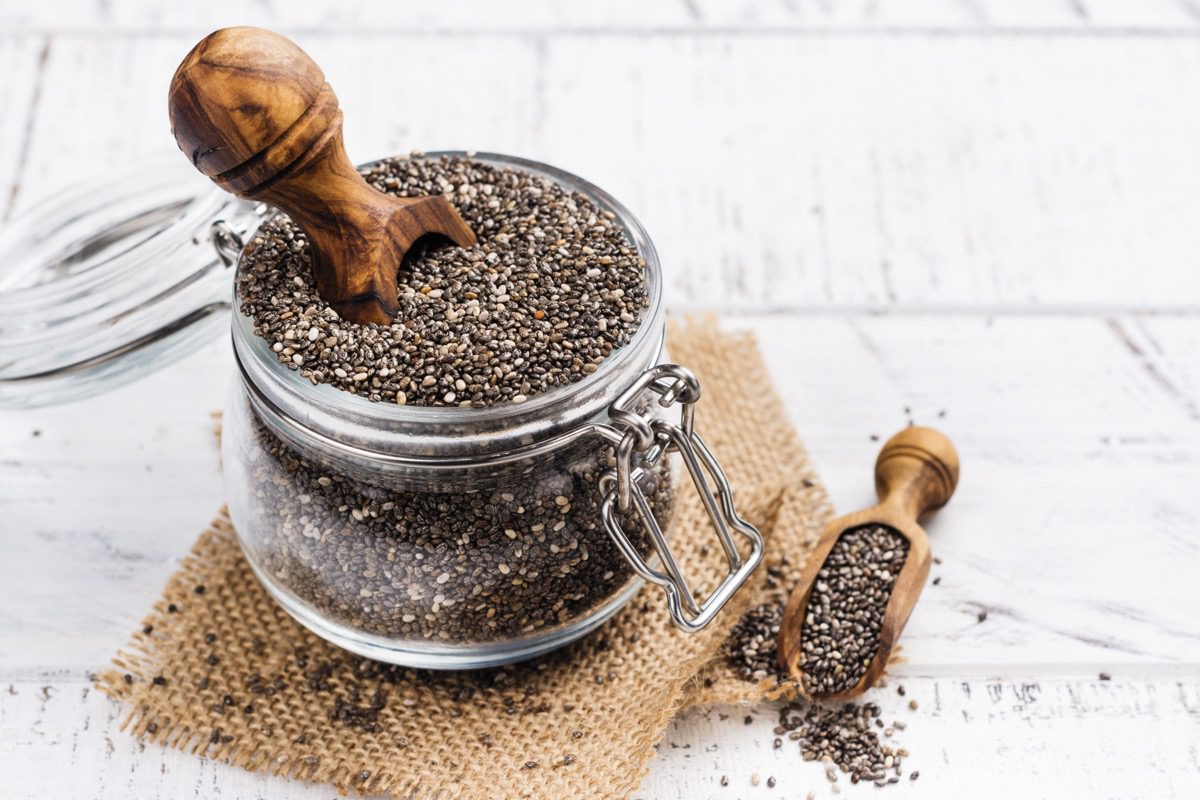
Chia Seeds in Modern Medicine
Chia seeds have been gaining popularity in modern medicine due to their potential health benefits. Here are some key points:
- Anti-inflammatory and Antidiabetic Effects: Chia seeds have been related to anti-inflammatory and antidiabetic effects due to their described composition.
- Nutritional Composition: Chia seeds are rich in fiber, protein, healthy fats, and various micronutrients like calcium, iron, magnesium, and phosphorus.
- Heart Health: Chia seeds are an excellent source of nutrients known to promote heart health, including fiber, healthy fats, and magnesium. They have been shown to reduce heart disease risk factors such as high LDL cholesterol and triglyceride levels, and increase HDL cholesterol levels.
- Blood Pressure Regulation: Chia seeds are a concentrated source of magnesium, which is involved in blood pressure regulation. They also contain fiber, long-chain polyunsaturated fats, and protein, which have been linked to blood pressure benefits.
- Digestive Health: Chia seeds are packed with fiber, which is essential for the health of the digestive system. They help promote regular and comfortable bowel movements and support the growth of beneficial bacteria in the gut.
- Nutritional Profile: Chia seeds are highly nutritious and versatile, making them a great addition to various dishes like yogurt, oatmeal, salads, and baked goods.
- Potential Risks: While chia seeds offer numerous health benefits, they may cause digestive symptoms like gas, diarrhea, and bloating if consumed in large amounts. They can also pose a choking hazard when exposed to fluids, especially for people with swallowing issues.
In summary, chia seeds have been studied for their potential health benefits, including anti-inflammatory and antidiabetic effects, heart health, blood pressure regulation, and digestive health. However, it is essential to consume them in moderation to avoid potential complications.
The Sustainability of Chia Plants
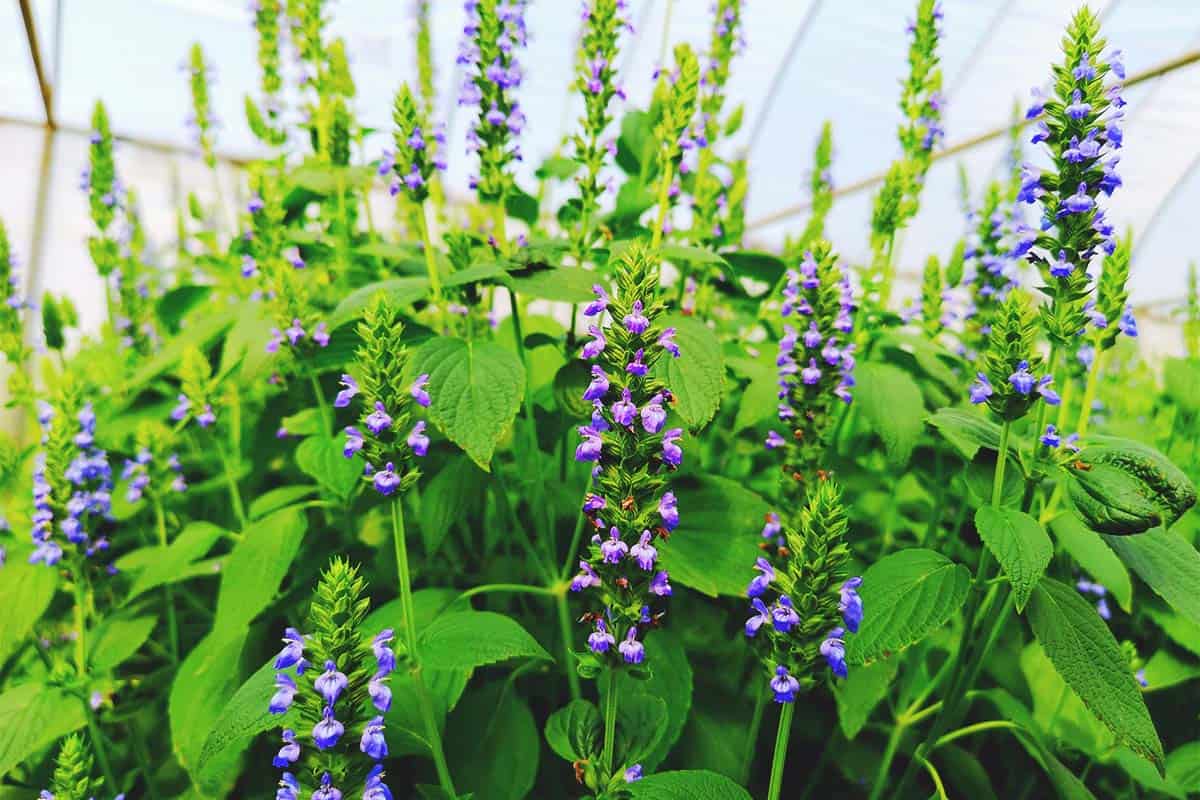
- Resilience and Low Maintenance:
- Chia plants are resilient and require minimal maintenance once they take root.
- They can thrive in various climates and exhibit resistance to drought.
- Soil Health and Biodiversity:
- Chia acts as a rotation crop, benefiting the soil and surrounding environment.
- Its deep root system helps break up compacted soil, improving overall soil health.
- Chia farming attracts pollinators like bees and butterflies, promoting biodiversity.
- Water Efficiency:
- Chia is super resilient to drought and can survive in low water conditions.
- In areas with limited water resources, chia farming conserves water and reduces irrigation demand.
- Sustainable Agricultural Practice:
- Chia’s unique characteristics make it an ideal rotation crop.
- It avoids harmful chemicals while still yielding high-quality produce.
Chia plays a crucial role in supporting sustainable food systems, benefiting both the planet and our well-being! 🌱🌎🌿.
Challenges in Cultivating Chia Plants
Cultivating chia plants can present several challenges for growers, particularly in terms of environmental conditions. The following table explains about the challenges in cultivating chia plants:
| Challenge | Description |
|---|---|
| Site Selection | Chia plants prefer moderately fertile, well-drained soils. They are highly intolerant of wet soils and require a pH range of 6 to 7. |
| Climate Conditions | Chia plants thrive in regions with warm temperatures and moderate rainfall. Ideally, the average temperature should range between 70 to 85 degrees Fahrenheit (21 to 29 degrees Celsius). |
| Pest Management | Chia plants are generally resistant to pests and diseases. However, it’s essential to monitor them regularly for any signs of infestation or damage. |
| Weed Management | Weeds are a critical issue during establishment, but they become less of an issue once the canopy closes. |
| Harvest and Storage | Chia is mechanically harvested with a standard combine, using small screens similar to those used with other small seed crops (clovers, alfalfa, timothy). Unlike other grains that may be stored on-farm immediately following harvest, chia is expected to go directly to the processor/cleaning plant after harvest, once it is dry of excess moisture. |
| Labor Requirements | Labor needs are approximately 2 to 4 hours per acre for production and harvest. |
| Production Considerations | Chia has a lifecycle similar to soybeans and is harvested early enough that it is possible to double-crop chia after winter wheat. |
These challenges can be overcome with proper planning, preparation, and management of the chia plants.
Recipes Using Chia Seeds
Chia seeds are versatile ingredients that can be used in a variety of recipes, adding a nutritional boost and unique texture.
Chia Water:
- One of the simplest ways to enjoy chia seeds is by soaking them in water. This easy recipe involves soaking 1/4 cup of chia seeds in 4 cups of water.
Homemade Lemonade:
- Create a refreshing homemade lemonade by soaking chia seeds in cold water, then adding lemon juice and a sweetener of your choice. Experiment with additional flavors like cucumber and watermelon.
Chia Pudding:
- Make a delicious chia pudding by soaking chia seeds overnight in milk or a milk substitute, then topping it with nuts, fruit, or spices like cinnamon. You can also use mashed banana and vanilla extract for added flavor.
Chia Truffles:
- For a quick and easy no-bake snack, try making chia truffles by combining dates, cocoa, oats, and chia seeds. These make for a nutritious and satisfying snack.
Chia Seed Jam:
- Chia seeds can be used to make a quick and healthy jam by combining them with fruit. This jam-like consistency is perfect for spreading on toast or using as a topping.
Chia Seed Crackers:
- Incorporate chia seeds into cracker recipes for added texture and nutrition. They can be sprinkled on top of the crackers before baking to enhance their nutritional value.
These recipes showcase the versatility of chia seeds and how they can be used in both sweet and savory dishes to boost their nutritional content and add a unique texture.
How to Store Chia Seeds Properly
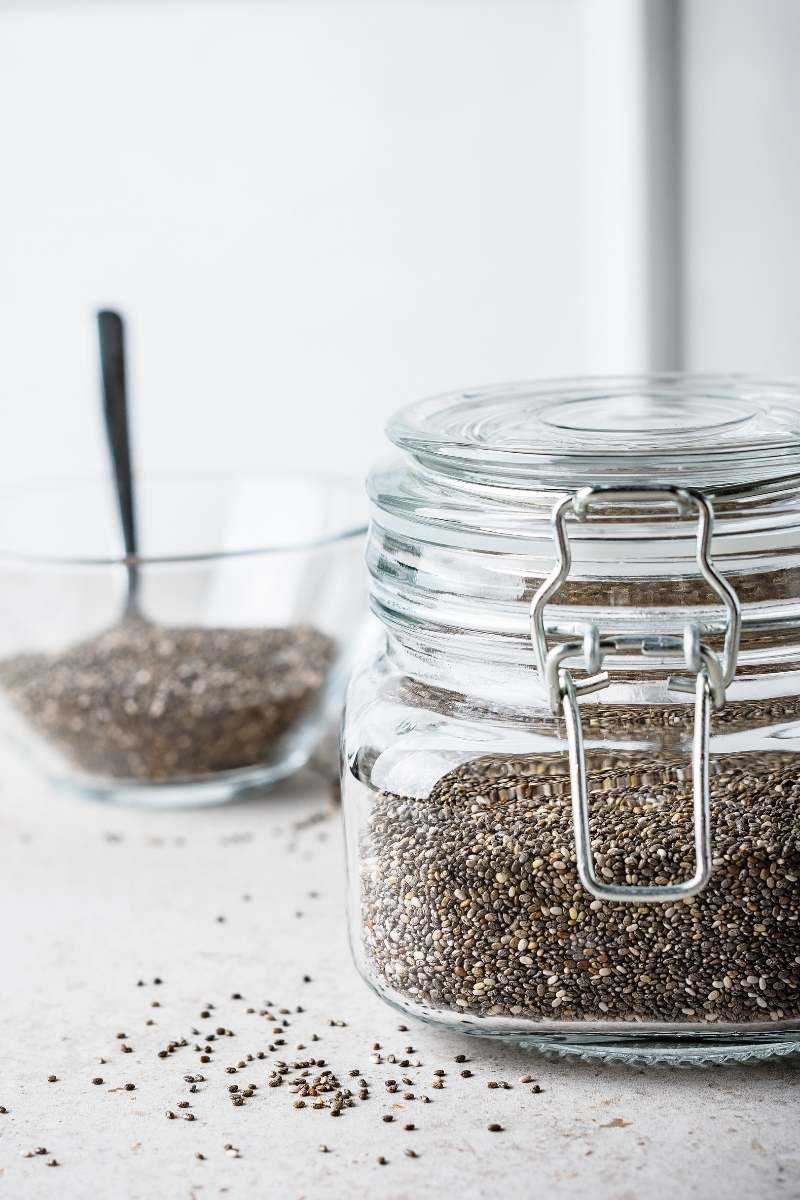
- Select an airtight container: Choose a clean, airtight container to store chia seeds. Ensure the container is dry before adding the seeds to prevent moisture accumulation.
- Keep in a cool, dark place: Store the airtight container of chia seeds in a cool, dark place away from direct sunlight and heat sources. Exposure to light and warmth can degrade the quality and nutritional value of the seeds.
- Ensure dryness: Confirm that the container and its surroundings are completely dry before sealing it. Moisture can cause chia seeds to spoil and lose their freshness.
- Consider refrigeration: For extended freshness, consider refrigerating the container of chia seeds. The cool temperature helps preserve the integrity of the seeds and maintains their beneficial nutrients.
- Label the container: Clearly label the container with the date of purchase to track the freshness of the chia seeds. This helps ensure you consume them within their recommended shelf life for optimal taste and nutritional benefits.
As a proud owner of the Oggi Clear Canister Airtight 38oz, I must express my satisfaction with its quality. From the moment I received it, I could tell that it was built to last. The durable construction and tight seal of the clamp lid ensure that my dry goods remain fresh and free from moisture. Despite regular use, the clear body material has proven to be impact-resistant, maintaining its pristine appearance over time.
Additionally, the included spoon adds to its convenience, making it effortless to access the contents. Overall, I am thoroughly impressed with the quality craftsmanship of this canister, making it a valuable addition to my kitchen storage solutions.
- Versatility: This container is highly versatile, suitable for storing a wide range of dry kitchen staples such as cookies, sugar, flour, cereal, coffee, tea, spices, and more.
- Pantry Organization: Ideal for organizing pantry shelves due to its slim and stackable design, which helps save space and creates a neat appearance.
- Airtight Seal: Equipped with durable silicone seal technology in the lid, ensuring that stored food items remain fresher for longer periods by preventing air from entering the container.
- Value for Money: Affordable yet practical kitchen accessory available in various sizes to meet different storage needs, providing good value for money.
- Durability: Constructed from high-quality materials with impact-resistant clear body material and sturdy clamps, ensuring years of durability with minimal care and cleaning required.
- Dishwasher Use: While the container is dishwasher safe, it is recommended to avoid dishwasher use, which may limit convenience for some users who prefer dishwasher cleaning.
- Limited Capacity: Depending on individual needs, the 38oz capacity may not be sufficient for larger households or for storing bulk quantities of certain items.
- Plastic Material: Some users may prefer containers made from alternative materials such as glass for long-term food storage, as plastic containers may retain odors or discolor over time.
- Scoop Attachment: There have been occasional reports of the clips that hold the spoons breaking, potentially reducing the convenience of the included scoop for some users.
The Future of Chia Plants
The future of chia plants looks promising as they continue to gain popularity for their numerous health benefits and versatility in the culinary world.
Conclusion: Embracing the Potential of Chia Seeds
- Rich history: Chia seeds have a rich history dating back to ancient civilizations like the Aztecs and Mayans, who valued them for their nutritional and medicinal properties.
- Modern popularity: In modern times, chia seeds have gained immense popularity due to their nutritional value and health benefits, becoming known as a superfood.
- Nutrient powerhouse: Chia seeds are packed with omega-3 fatty acids, fiber, protein, and antioxidants, offering numerous health benefits, including supporting heart health and aiding in weight management.
- Versatile ingredient: Chia seeds can easily be incorporated into various dishes, making them a versatile ingredient in the kitchen. They can be sprinkled on yogurt, blended into smoothies, or used in baking.
- Traditional and modern use: From being used in traditional medicine to finding a place in modern medical practices, chia seeds have proven to be a powerhouse of nutrients with various health benefits.
- Sustainability: Chia seeds are sustainable as a crop, and there is potential for further research and cultivation to harness their full potential.
- Embrace for a healthier lifestyle: Embracing the full potential of chia seeds can lead to a healthier lifestyle and a more sustainable future, both for individuals and the planet.
- Simple incorporation: Whether sprinkled on yogurt, blended into smoothies, or used in baking, chia seeds offer a simple and effective way to boost overall well-being.
Watch video for more information:
FAQ
Can chia seeds be used as a natural remedy for certain health conditions?
Yes, chia seeds have been used in traditional medicine to help with digestion, hydration, and energy.
Are there any environmental benefits to cultivating chia plants?
Chia plants are considered to be sustainable crops as they require minimal water and resources compared to other crops.
How can I incorporate chia seeds into my diet if I’m not a fan of their texture?
You can blend chia seeds into smoothies, mix them into yogurt or oatmeal, or use them as a thickening agent in soups and sauces.
What is the best way to store chia seeds to maintain their freshness?
Chia seeds should be stored in an airtight container in a cool, dry place away from direct sunlight to prevent them from going rancid.
Can chia seeds be used as a natural remedy for certain health conditions?
Yes, chia seeds have been used in traditional medicine to help with digestion, hydration, and energy.
Can chia seeds be consumed by people with dietary restrictions like gluten intolerance or nut allergies?
Yes, chia seeds are gluten-free and nut-free, making them a versatile and safe option for individuals with dietary restrictions.

Studied Agricultural Engineering-Plant Protection at University of California, Davis.
Head of Content writing team at Southelmontehydroponics.com

